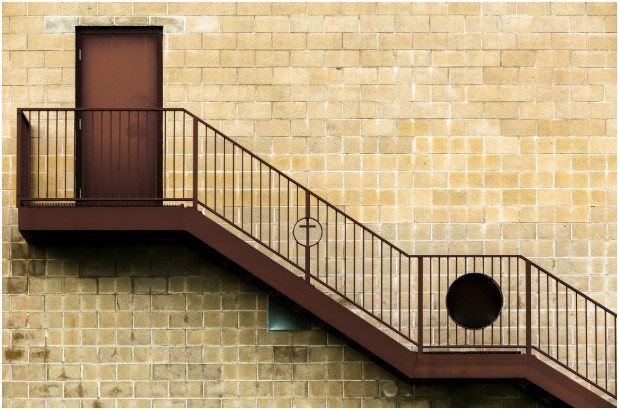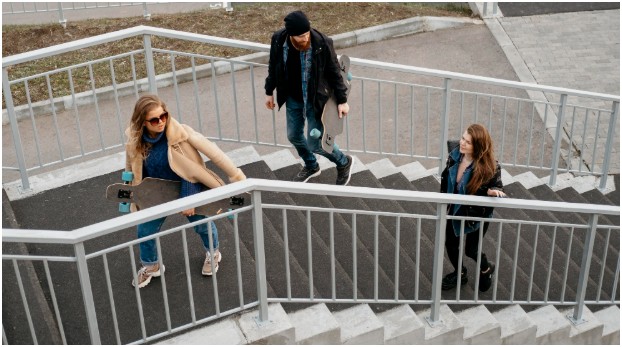Years ago, I was rushing to a courthouse in Baltimore, juggling a coffee, a briefcase, and my dignity. You’d think, as a safety law expert, I’d know better than to speed down a slick marble staircase without using the handrail. Spoiler: I didn’t. I slipped, bruised my ego (and tailbone), and made it to court with a limp and a latte-soaked tie.
Since then, I’ve taken handrails a whole lot more seriously. And if you’ve ever wondered how do handrails on stairs help keep you safe?, well, I’ve got both the legal insight and the personal bruises to walk you through it.
Why Are Handrails More Than Just Decorative?

Handrails aren’t there to impress your guests or match your balusters—they’re built for survival, stability, and liability prevention.
From a legal and regulatory standpoint, handrails are mandated in most public, workplace, and residential staircases because they work. They prevent falls, reduce the severity of injury if you do slip, and offer something to grip when you’re carrying an overloaded laundry basket or wrangling a toddler.
The building codes that govern them aren’t random, either. They’re crafted from decades of data on injuries, ergonomics, and accessibility. And trust me, no one wants to face a lawsuit because a $50 railing wasn’t installed.
What Makes Handrails So Effective at Preventing Falls?

So, how do handrails on stairs help keep you safe? The magic lies in biomechanics and basic human reflexes.
When you’re walking up or down stairs, your body’s balance can be compromised easily, especially if you’re tired, distracted, or wearing socks on hardwood (don’t ask). A sturdy handrail provides a critical third point of contact that helps your body stabilize.
Plus, in that split second when you realize you’ve missed a step or tripped over your shoelace, your instinct is to reach out. If there’s nothing there? Down you go. If a handrail is within reach, it becomes your best shot at staying upright.
Are There Safety Rules Around Handrails You Should Know?
Oh, absolutely—and they’re stricter than you’d think.
OSHA, ADA, and local building codes all have handrail requirements. These include minimum height, grip size, strength, and clearance from the wall. Why so picky? Because one poorly designed handrail could become a lawsuit waiting to happen.
Here’s a quick table to give you an idea of what regulators expect:
| Standard | Handrail Height | Grip Requirements | Where Required |
| OSHA (Workplaces) | 30–38 inches | Must support 200 lbs force | Stairs with 4+ risers |
| ADA (Public Access) | 34–38 inches | 1.25–2 inches diameter | Ramps, stairs in public buildings |
| IRC (Residential) | 34–38 inches | Must be graspable | Stairs with 4+ risers |
Failing to follow these doesn’t just increase injury risk—it puts building owners and employers at serious legal risk.
How to Make the Most of How Do Handrails on Stairs Help Keep You Safe?
Let’s talk practical steps—because a handrail is only as useful as how it’s installed and used.
First, always inspect for sturdiness. A wobbly or loose handrail is like a parachute with holes. If you’re building or renovating, opt for materials that can withstand impact, such as metal or hardwood, and avoid using glass or overly decorative rails that aren’t designed to bear weight.
Next, educate. In workplaces, make handrail use part of your safety culture. Add signage, remind teams during toolbox talks, and inspect stairwells regularly to ensure safety. At home, especially with kids or elderly family members, reinforce habits early. Even a small fall can turn serious fast.
And yes, you should use the rail. Every. Single. Time.
What If You Have Limited Mobility—Do Handrails Still Help?

Absolutely. They’re crucial.
People with arthritis, vertigo, or limited leg strength rely on handrails not just for support, but for independence. The right rail can make the difference between navigating stairs safely or avoiding them entirely.
Double handrails—one on each side—are especially helpful for those using a cane or needing extra balance. And for public buildings? Not having ADA-compliant handrails isn’t just a bad look—it’s a legal liability.
FAQs: Real Talk on Handrails
Are handrails required on both sides of a staircase?
Not always. Residential codes often require handrails on only one side, but commercial or public buildings typically need handrails on both sides, especially if the stair width exceeds 44 inches.
Can I install my own handrail?
Sure, if you’re handy and follow code. But if it’s a workplace, rental property, or public building, hire a licensed pro. Improper installation can cause more harm than good, and open you up to legal exposure.
What’s the difference between a handrail and a guardrail?
A handrail is something you grip while climbing stairs. A guardrail is a safety barrier at the edge of a platform or staircase. They serve different purposes, but both prevent falls.
Do handrails have to be continuous?
In most cases, yes. They should run the full length of the stairs without major interruptions. Continuous handrails reduce gaps where someone might miss a grip when it matters most.
Grab This Wisdom Before You Trip
So, how do handrails on stairs help keep you safe? In more ways than most people realize. They catch you when your reflexes kick in, guide your balance when your footing falters, and reduce serious injury when accidents happen.
My advice? Never underestimate the power of a humble handrail. It might not be glamorous, but it could save your neck—literally.
And if you’re a building manager, parent, or policy-setter? Treat those rails like your safety MVPs. Keep them code-compliant, clean, and ready for action. Your future self (and possibly your legal counsel) will thank you.




